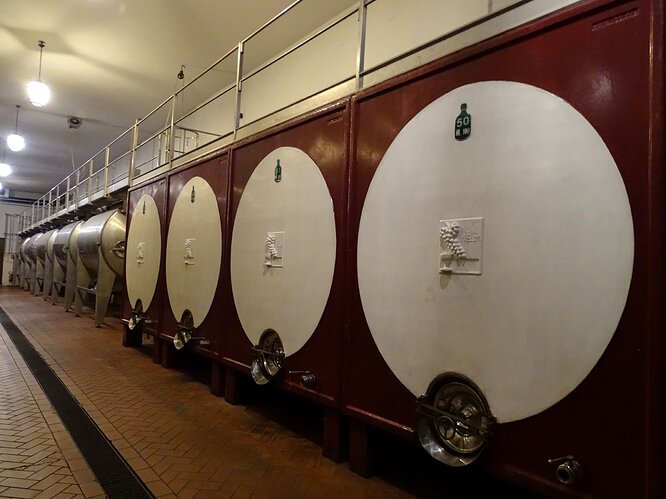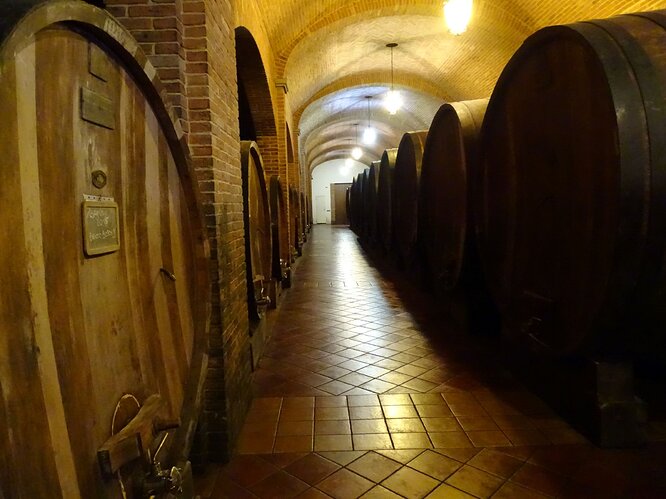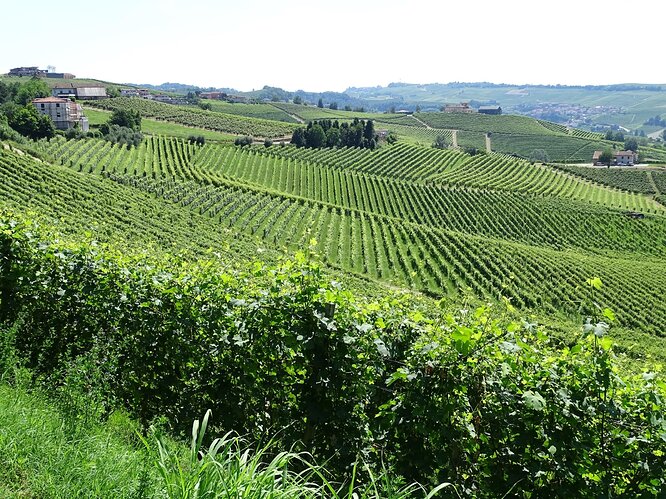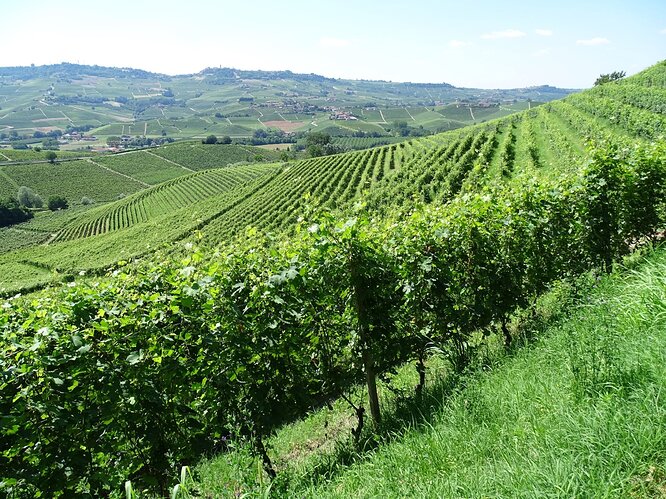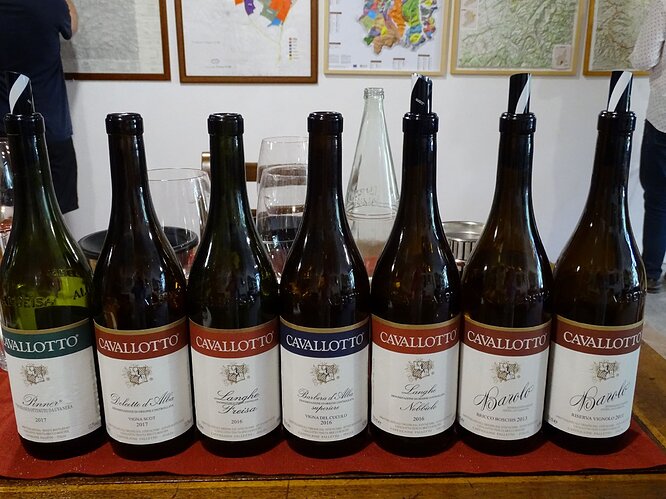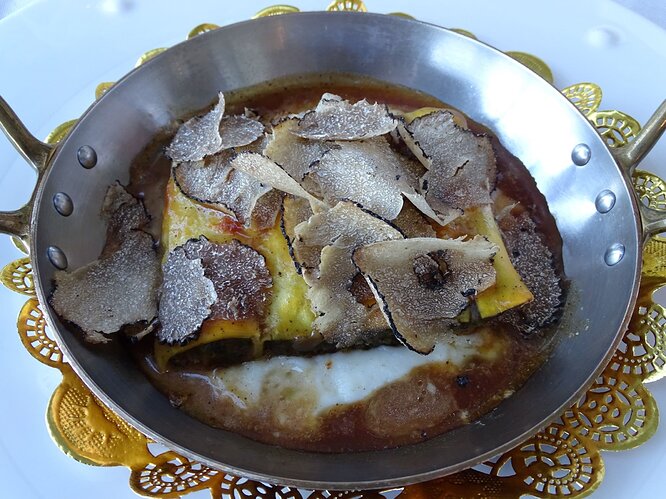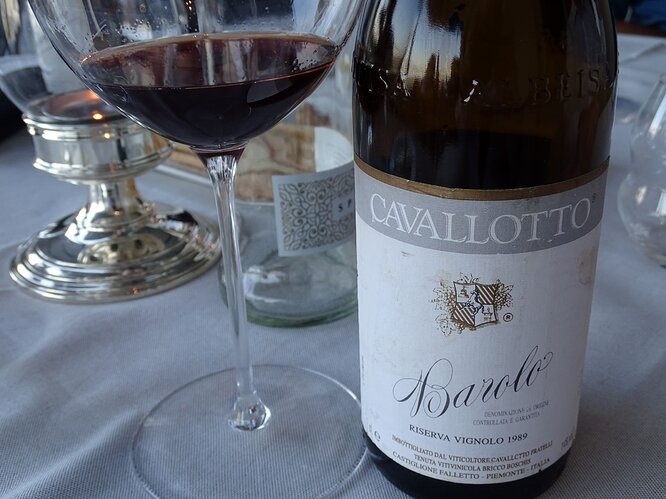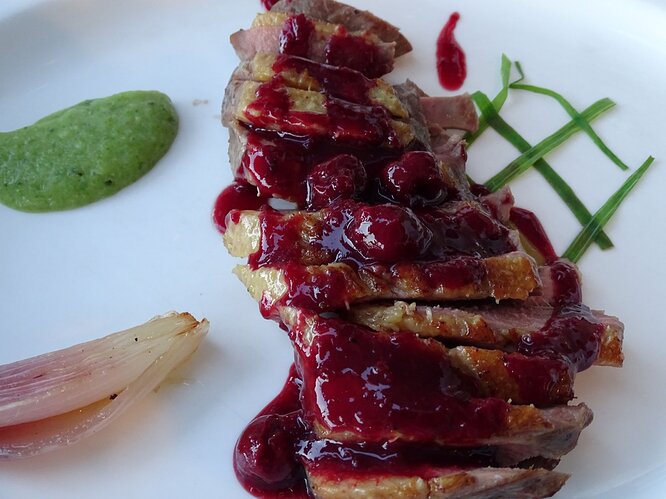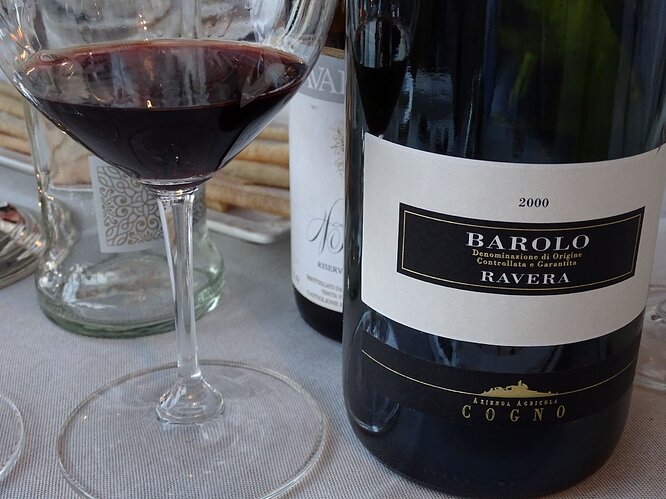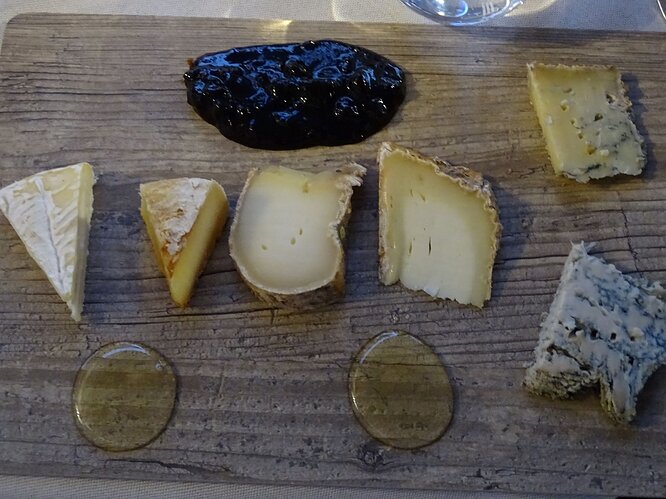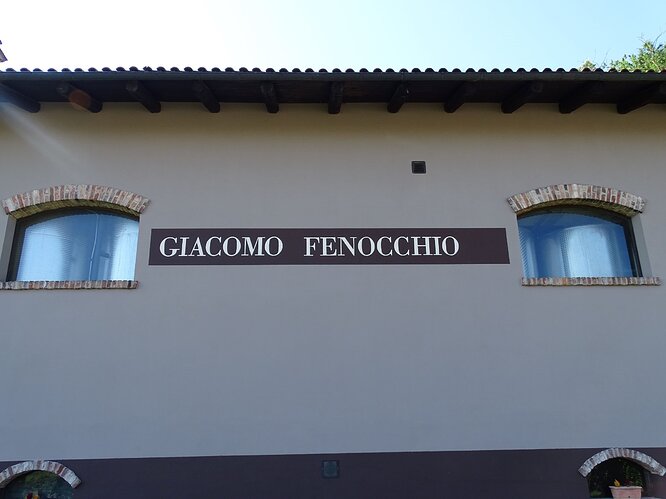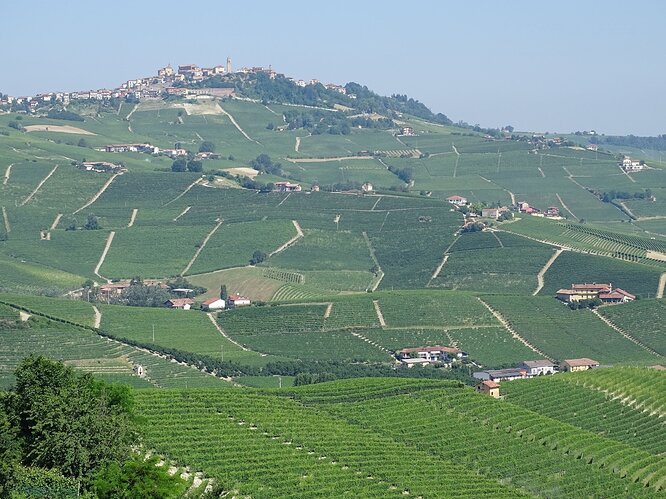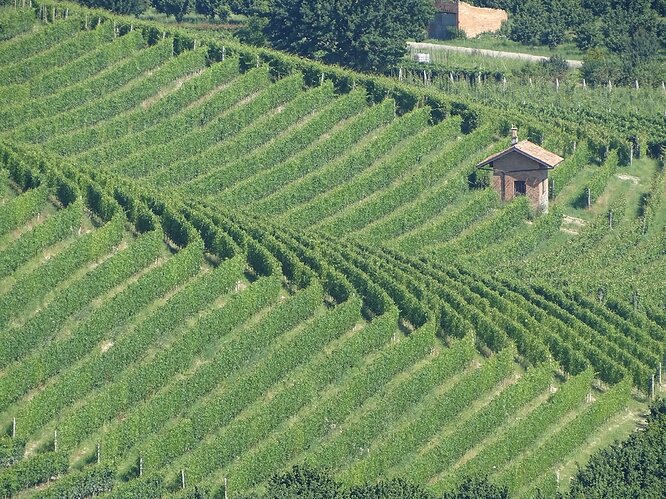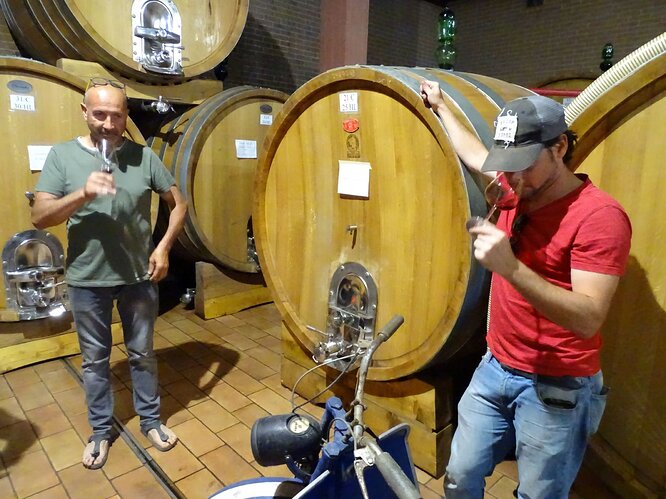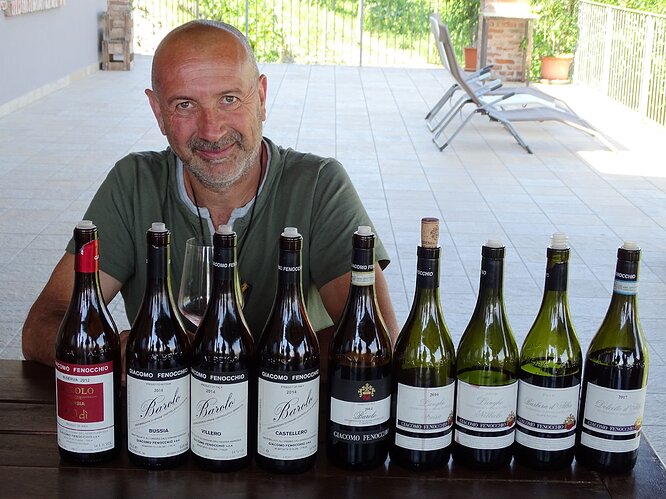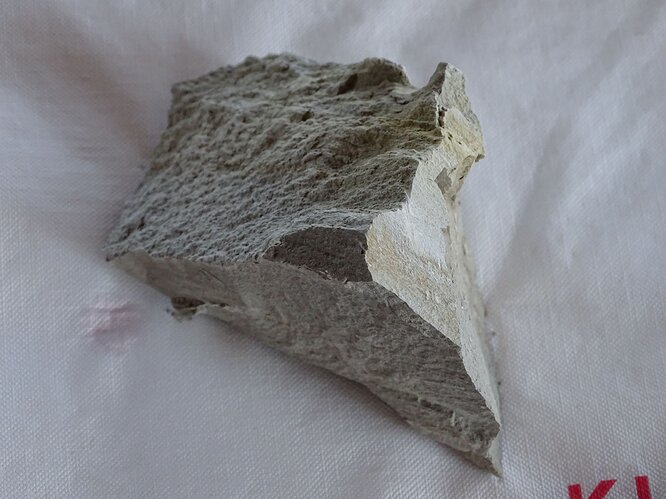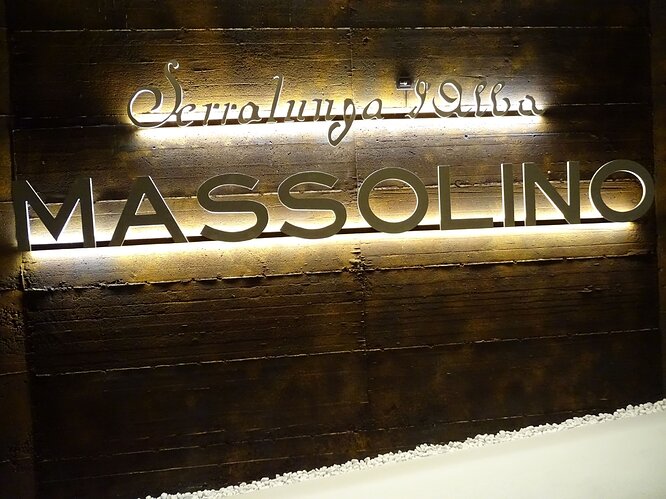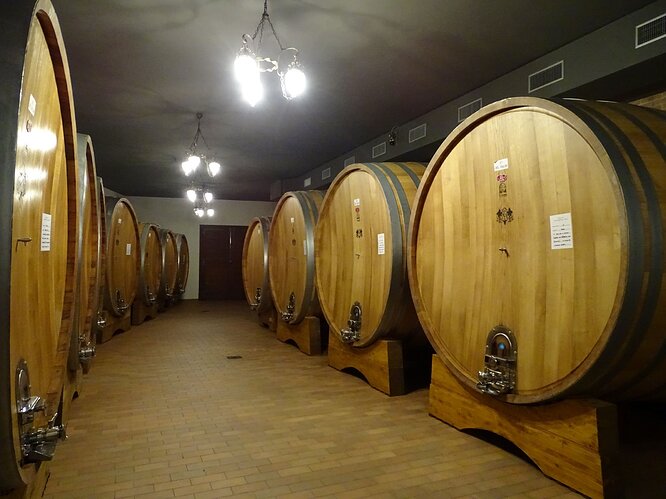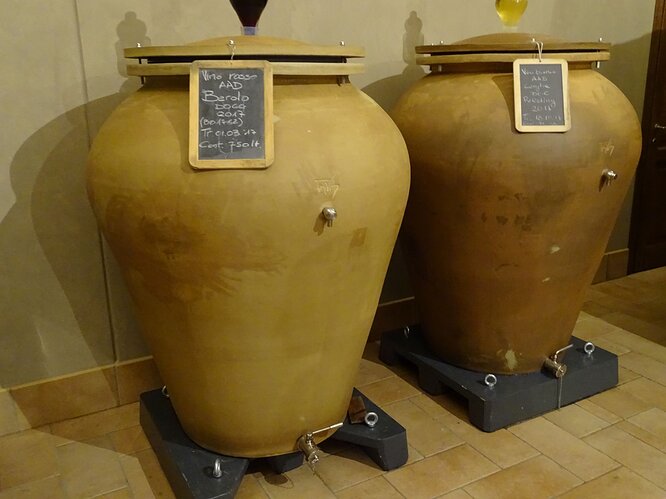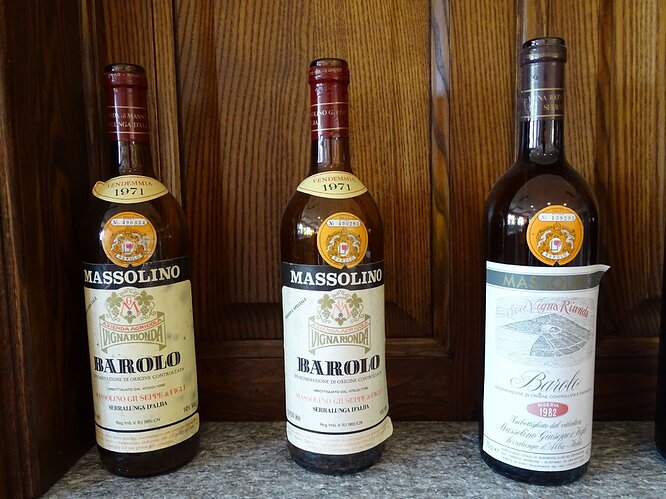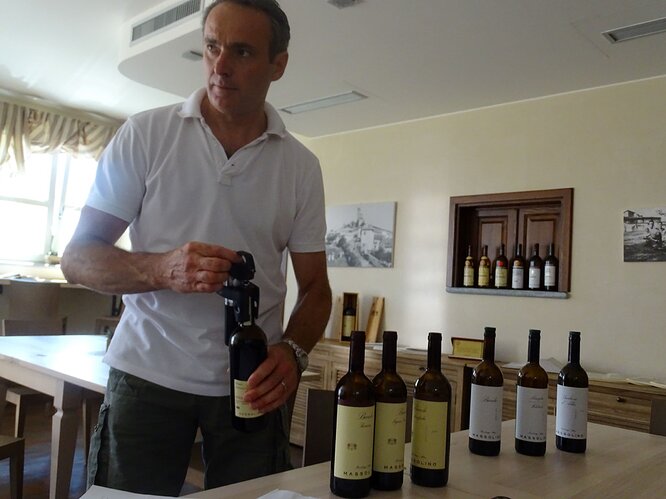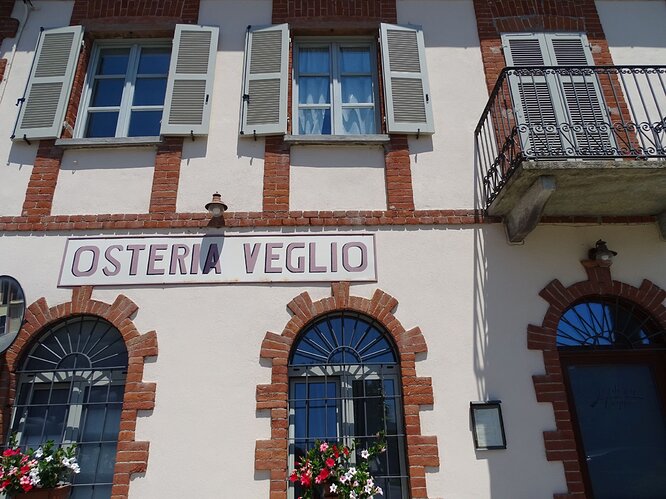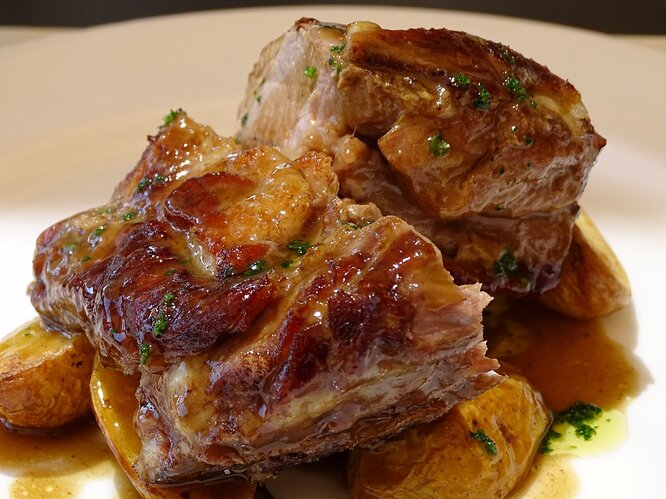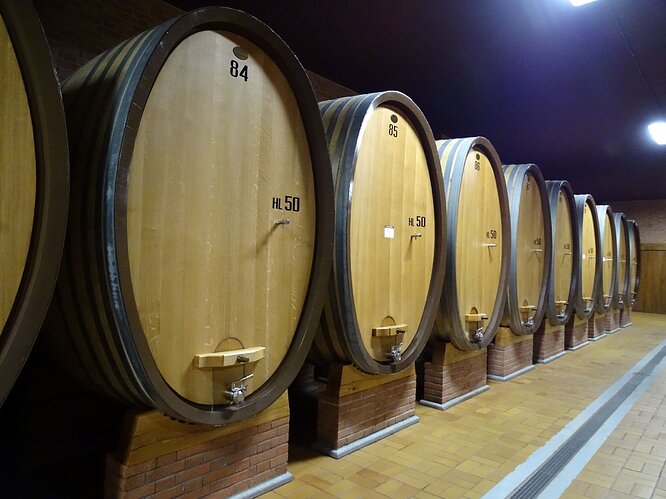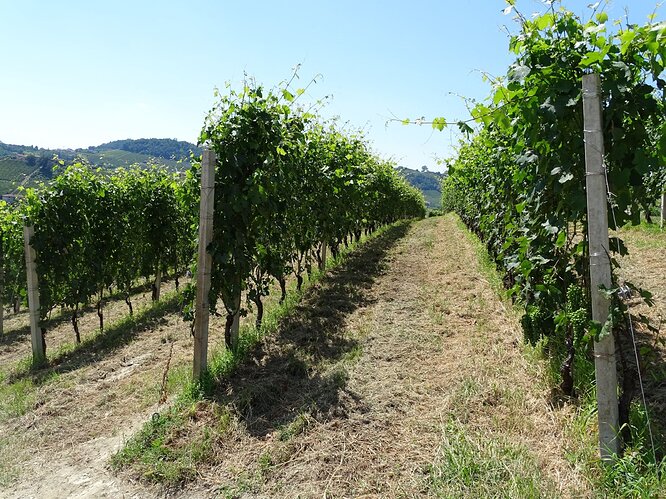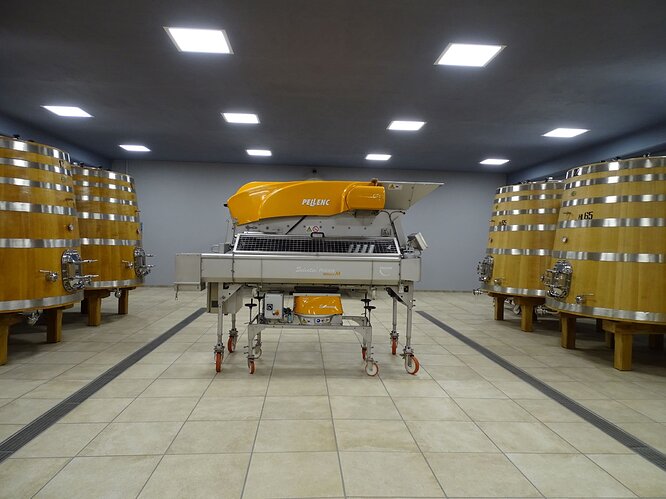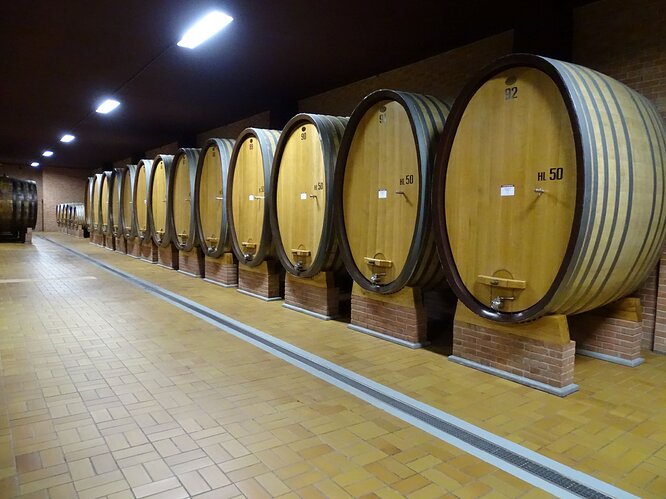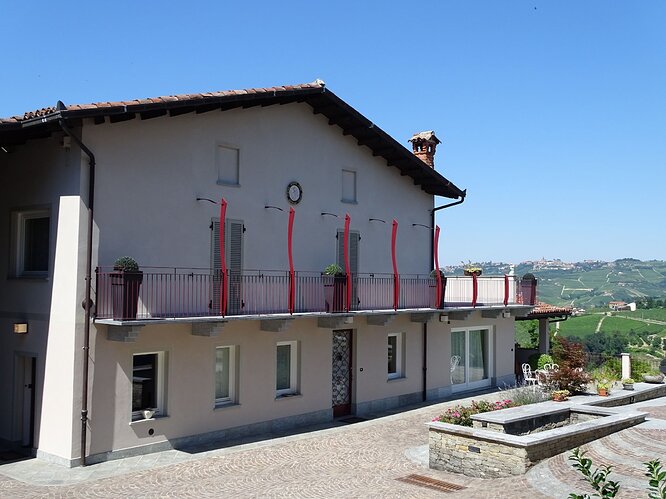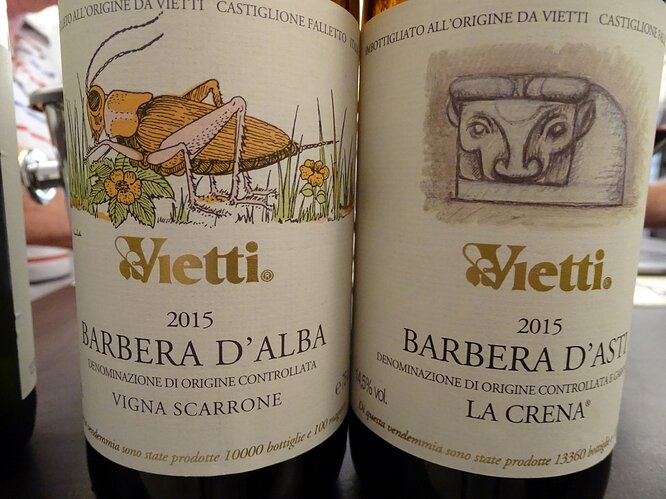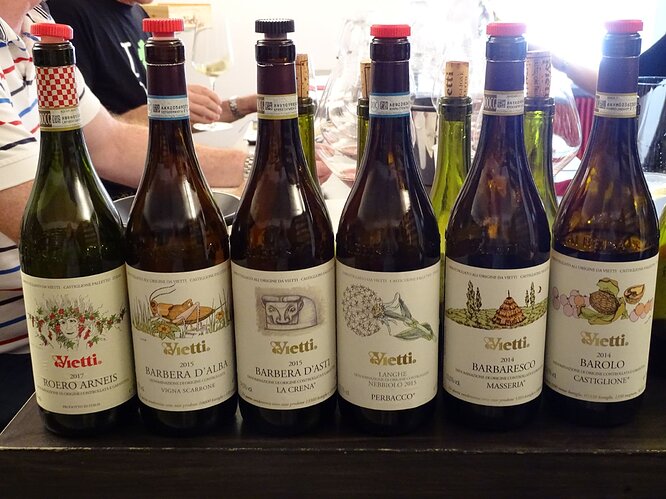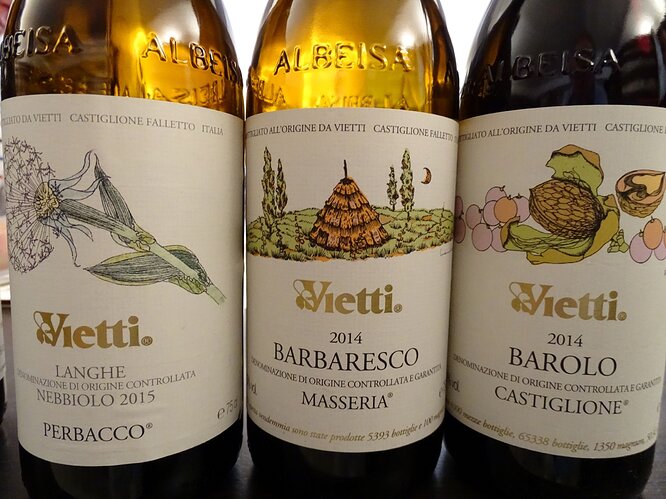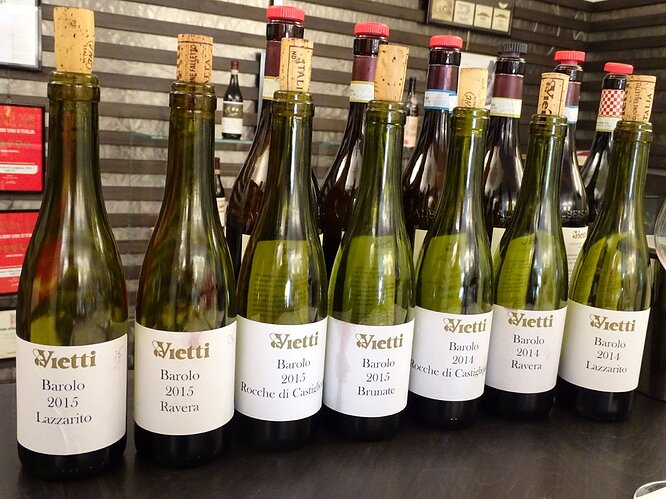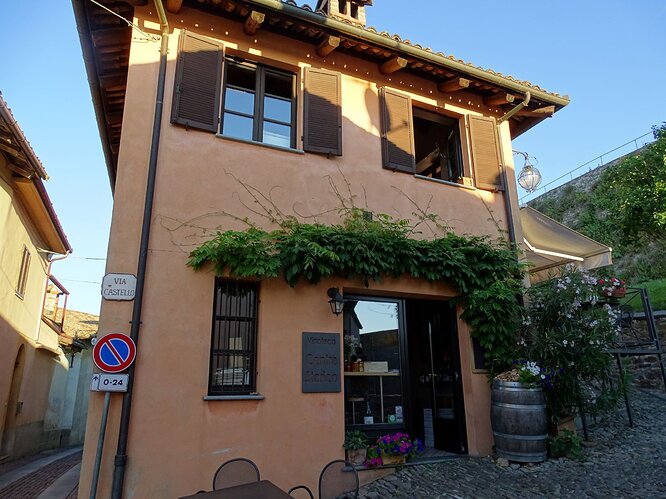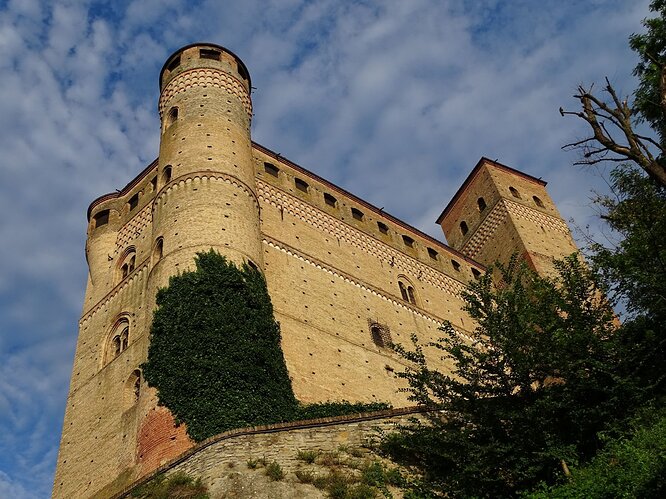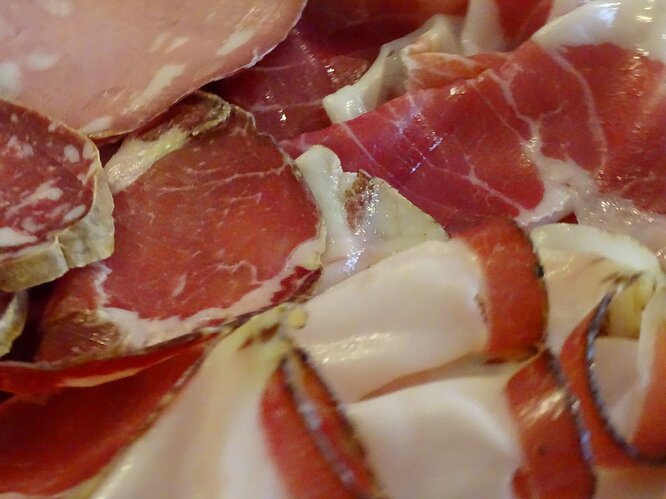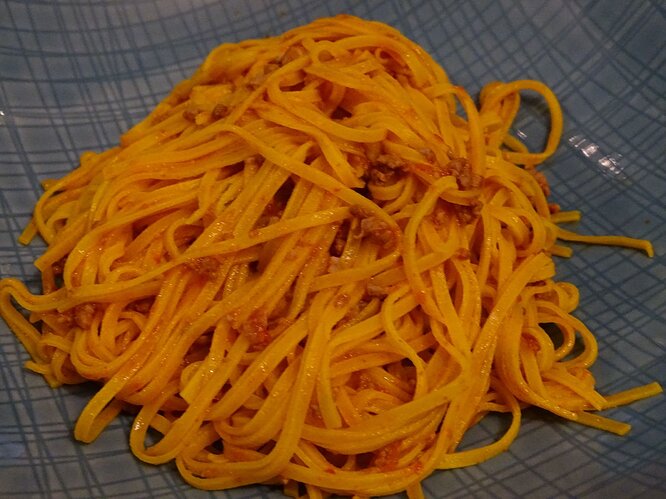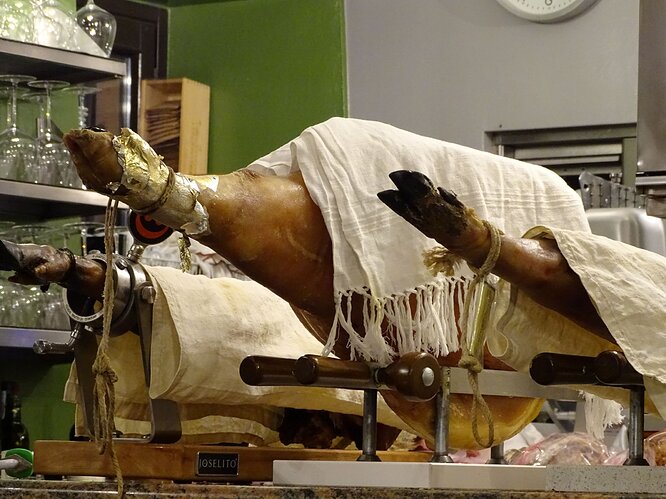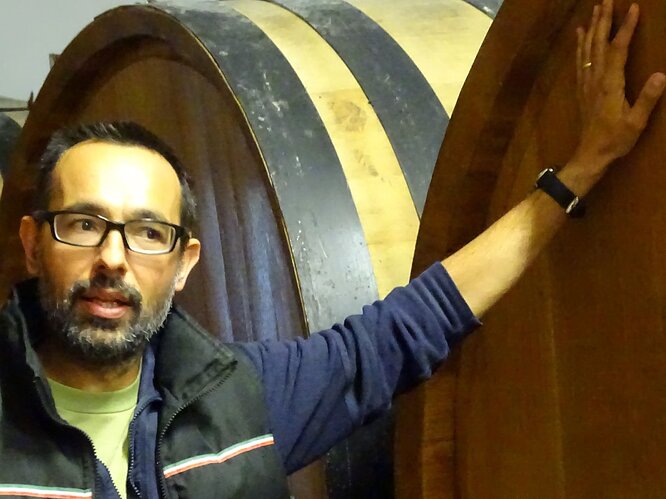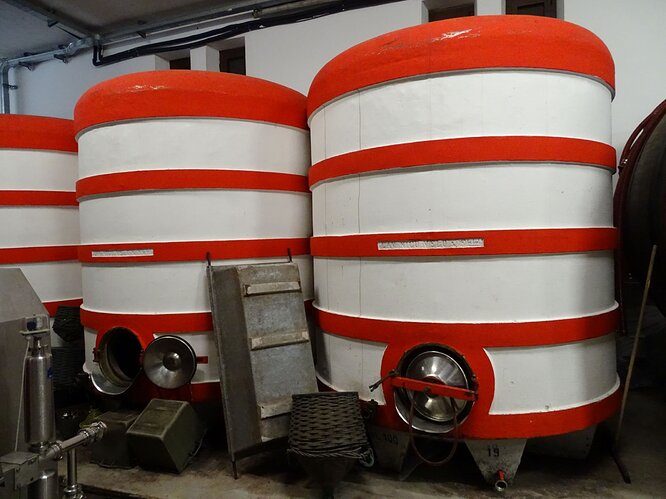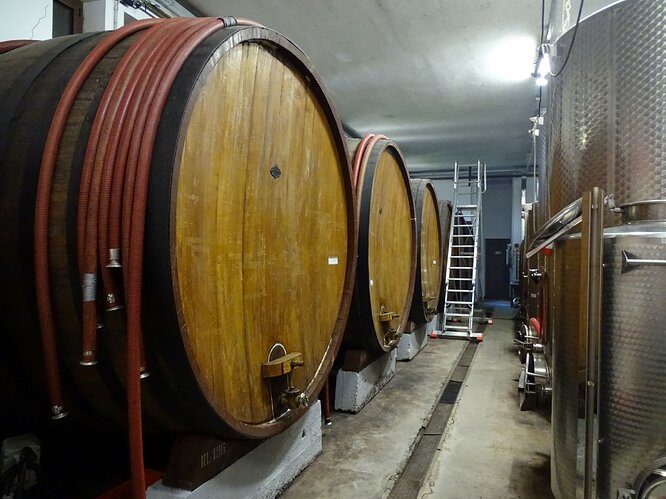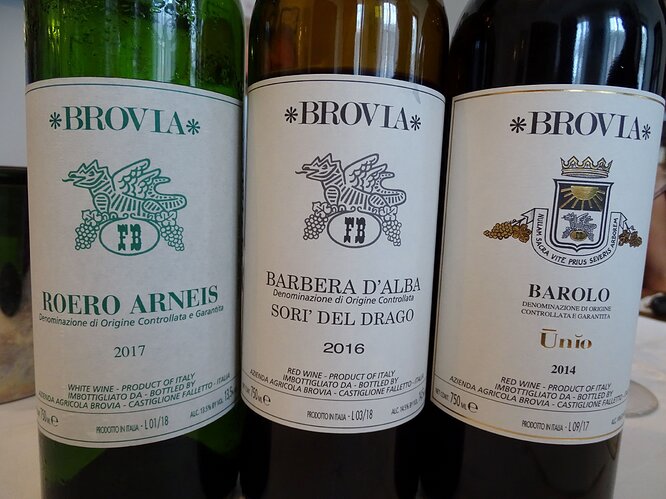CAVALLOTTO VISIT WITH GIUSEPPE CAVALLOTTO - Tenuta Bricco Boschis, Castiglione Falletto
I am a big fan of the ultra-traditional Barolos and Barberas produced by Cavallotto. I think that, for some reason I cannot identify, they are underrated and under-appreciated, given the quality of wine they typically produce.
Giuseppe Cavallotto told us that typically Barolos receive maceration for around 30 days. We pointed to Cavallotto’s rotofermenters but Giuseppe noted that they are only “to gently turn the grapes, we don’t break the skins”.
Giuseppe said that Cavallotto’s average vine age is 40-45 years, with some 60-65+ years old. They employ green harvest up to July or August. Cavallotto produces about 100,000 bottles per annum, 70% Nebbiolo.
Giuseppe said that the 2012 San Giuseppes and Vignolos were to be bottled in July or August 2018.
Giuseppe apologised that he couldn’t show us any San Giuseppes, due to where they were in the winemaking process. He mentioned that the 2011 San Guiseppe was “drinking well now”. He, also, said that, in his view, the 2001 San Guiseppe is presently drinking the best of all the vintages of their top Riservas.
I managed to acquire a bottle each of the 1997 and 2001 San Guiseppe ex-winery, the 2001 the last bottle they had for sale. I have found that Cavallottos of this era often have cork problems. However, I was pleased to find no problems with these two bottles when, upon returning home, I served them blind to friends at dinners. A friend served me, again blind, a 2009 San Guiseppe at one of these dinners, so I include the notes here.
Bottle tasting
-
2017 Cavallotto Piemonte Pinot Nero Pinner - Italy, Piedmont, Piemonte DOC
100% Pinot Noir, made in a white wine style. Light red coloured. On bouquet, strawberries, raspberries, blood orange and grapefruit. A refreshing wine for a hot day. A good picnic wine. Red berry and citrus fruit. Totally dry. -
2017 Cavallotto Dolcetto d’Alba Vigna Scot - Italy, Piedmont, Alba, Dolcetto d’Alba
“From a hill in front of Bricco Boschis with a different soil, clay and limestone and no sand, unlike Bricco Boschis”, Giuseppe said. Bottled in June 2018, and described as “too young” by Giuseppe. He said that, for Cavallotto, “all our wines are important” noting that they green harvest Dolcetto. The Dolcetto had one year in neutral, large format oak. Dark colour. A nose of spices, blood and fur with smoky barbequed meats. I liked this wine. It was silky smooth, plush and opulent, but, as Giuseppe warned, a bit tight. Giuseppe described the wine as “elegant” saying “don’t open it in the first year – normally it will keep 2-3 years, but here more like 2 years only”. -
2016 Cavallotto Langhe Freisa - Italy, Piedmont, Langhe, Langhe DOC
Cavallotto has 0.5 ha of Freisa vines. “Ten days’ maceration here”, said Giuseppe. Dark colour. “Oh, it’s a beautiful nose” said Thierry. Funky and a bit wild with wild blackberries and raspberries, bramble, barbequed venison and earth. I really enjoyed this wine. Very dark fruited and a bit feral (in a good way). Wild berries and dark plums, some metallic minerality. “Drink it with meat” said Giuseppe but “wait 2-3 years”. Giuseppe typically drinks his Freisas within about five years of release. -
2016 Cavallotto Barbera d’Alba Bricco Boschis Vigna del Cuculo - Italy, Piedmont, Alba, Barbera d’Alba
The “Cuculo” in the name refers to the cuckoo, which are sometimes found in the vineyard, Guiseppe told us. Eighteen months in neutral, large format wood. A nose of dark spices, blackcurrant and liquorice. On palate, the first impression is of the raging acidity, but this balances the wine and makes up for the lack of tannins. Milk chocolate, plums, cassis and liquorice. I normally like this Barbera but I found this version, this young, a bit difficult to assess. Give it at least 1-2 years before opening. -
2016 Cavallotto Langhe Nebbiolo - Italy, Piedmont, Langhe, Langhe DOC
Bottled in May 2018 and again described by Giuseppe as “too young”. A serious black fruited nose of cherries, plums, liquorice and graphite. On palate, I was surprised by the quality here, thinking it Barolo-level. (Giuseppe said, “I agree. We could have labelled this wine as Barolo”.) A good volume of concentrated, plush, dark berried fruit packed around an austere, iron mineral core. Nice minerality and grip on the finish. Svelte tannins. Well balanced with precise acidity. An excellent buy. -
2013 Cavallotto Barolo Bricco Boschis - Italy, Piedmont, Langhe, Barolo
A little darker in colour than the 2016. An attractive bouquet of black spices, espresso, liquorice and rose and violet florals. On palate, really serious volume and concentration. Large scaled and powerful. Good freshness and precision. Seamless, silky tannins. Quite elegant. A strong porcini character, also blackberries and other dark fruit, liquorice and minerals. A very good Barolo to cellar long term. “It’s open and easy now – after one year in bottle – but I think it will soon close down hard”, said Giuseppe. He didn’t say, once closed, how long he’d cellar it, but I’d imagine at least 5+ years. -
2011 Cavallotto Barolo Riserva Vignolo - Italy, Piedmont, Langhe, Barolo
Giuseppe noted that there is more clay in the soil at this site. A “very intense” nose said Mark. Fresh and breezy, with notes of soil, dry underbrush, black fruit and dark rose perfumes. On palate, huge concentration and power on entry. Also serious dry extract and density on mid palate. Tactile but silky tannins. A lot of ripe – but not over-ripe – mainly dark berry fruit. The 14.5% alcohol is not over-prominent. A brilliant Riserva. Cellar 3-5+ more years.
Upon return home …
-
1997 Cavallotto Barolo Riserva Bricco Boschis Vigna San Giuseppe - Italy, Piedmont, Langhe, Barolo
Bottle bought ex-winery and served blind. Opened and decanted three hours before serving, which, ideally, should have been earlier. Softly coloured, browning slightly at the rim. A strong, powerful bouquet of primary, fresh berry fruit, but perfumed showing both rose and violet florals. Also secondary, earthy, dry brushwood, creosote and porcini aromas. “The truffle is pronounced”, said Maciej. The next evening the bouquet had moved more secondary: smoky, more tarry, tobacco with a touch of citrus. On palate, on the first night, the 1997 had massive tannins and was quite austere at its core. It made the robust two 2005 red Burgundies served before it look quite petite. A superb Barolo, drinking comparatively young, even on the second evening. Sour cherries, showing both fresh and dried fruit, earth and iron, with a citric edge. The satiny texture, good acidity and fine grained tannins. Good length. In its drinking window now but no hurry needed. -
2001 Cavallotto Barolo Riserva Bricco Boschis Vigna San Giuseppe - Italy, Piedmont, Langhe, Barolo
Bottle bought ex-winery and served blind. Opened and decanted four hours before drinking but it probably could have used more air. A superb Barolo, a little better than the 1997 San Giuseppe, I thought. A lovely bouquet of tar, black cherry, blackberry, violets and roses. Restrained, contained and a little austere on palate. Piercing minerality and beautiful sour cherry. “Very straight and direct”, said Nick. Very linear, driven and focused. Persistent and very long. Drink or hold. -
2009 Cavallotto Barolo Riserva Bricco Boschis Vigna San Giuseppe - Italy, Piedmont, Langhe, Barolo
Served blind to me. A bouquet of dark cherries, black plums, smokey game meat, graphite and slatey minerals. In the mouth, precise, clean and very linear. Largely black fruited with liquorice, cloves and minerals. Fine tannins. Decent acidity. Good length. Good but not great, I’d doubt that this vintage of San Giuseppe will reach the heights of vintages like the 2001, 2004 or 2010.
Posted from CellarTracker
